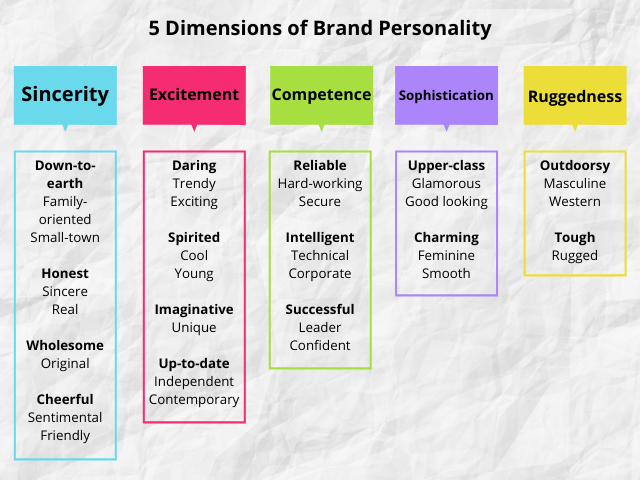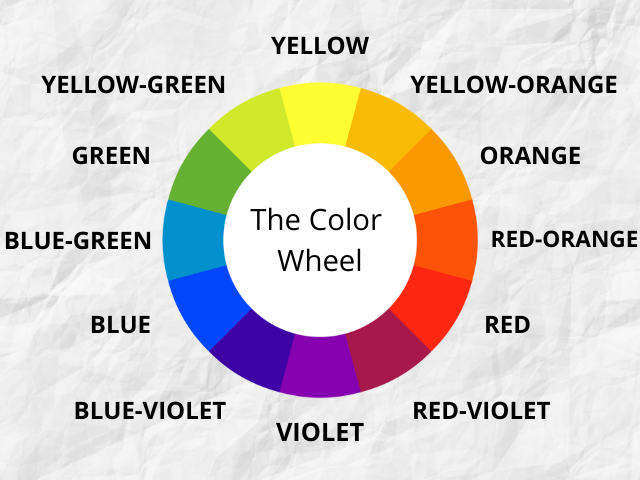Color Psychology in Branding and Marketing
Today’s business owners are constantly looking for ways to better promote their brand. Some use innovative approaches to production, some try to surprise customers with an assortment. At the same time, everyone, without exception, tries to use non-standard marketing solutions.
One of such innovative methods for building a marketing campaign is the psychology of brand colors. PodZa invites you to learn more about the new promotion trend, which will be useful not only in print-on-demand business but also in other fruitful sectors.
Table of Contents
How Do Color Meanings Affect Your Brand?
How to Find the Best Color Palette?
What is Color Psychology?
Experts in the field of psychology define the psychology of color as an integrated approach to the study of human behavior under the influence of determinants such as colors and shades. In recent years, this direction has been actively used in marketing, which even served as the impetus for the emergence of a new method of promotion - color psychology branding.
It's no secret that visual perception plays a decisive role in the promotion process. In marketing, color psychology seeks to study how your brand colors affect consumer behavior and brand reputation. According to statistics, it takes buyers, on average, one and a half minutes to form their initial opinion about the company and its products.
It may sound like a mess, but marketing research confirms the opposite. According to Emerald Insight, in about 90% of cases, customers are ready to make purchases or order services from a company based only on personal impressions of the color design of a website or online store. Even if they first entered this platform. The psychology of color affects your marketing and branding whether you like it or not. This is why if staying in the shadow of your competitors is not in your plans, it's time to start studying the effect of color on your business.
How Do Color Meanings Affect Your Brand?
Before proceeding to the analysis of the influence of different colors, it is necessary to find out why color psychology in business is so important. Here are some of the key benefits of using colors correctly in branding:
- They shape the correct perception of the brand. Harmoniously selected colors will help to form a positive attitude of customers even at the stage of getting to know the company. If the colors were not chosen correctly, then the logo or the design of the pages in the online store can make the brand too invisible or form an aggressive attitude on a subconscious level. And this is fraught with the loss of customers and profits.
- The color makes the brand recognizable. The color scheme can make the brand recognizable. A prime example of successful and memorable color branding is the world-famous McDonald’s and Coca-Cola, which have used red to their advantage in different ways. Too neutral shades cannot guarantee that particular color will be associated with your company by buyers.
- A well-chosen design makes the brand unique. In retail color psychology, each color is associated with certain character traits. Before choosing colors, you need to clearly define what traits your company should associate with. Simply put, color can convey the personality of a brand among other companies on the market.
- Through color, you can influence the target audience. There are many case studies on this topic. So, some groups - selected, for example, by gender, ethnicity, or cultural characteristics - have their own preferences in colors. Knowing these preferences, you can use them in branding, thus attracting customers from your target audience. This will not only help to make a targeted customer impact but also form a positive reputation for the company.
- Color helps boost conversions. If the color is chosen based on the personality of the brand and the preferences of the target audience, it can increase the number of customers. This directly affects the profit and recognition of the company.

You can see that you shouldn’t really underestimate the importance of color psychology in marketing. Even if most customers do not understand the significance of your chosen color scheme for decoration, their subconscious mind will become your ally and encourage them to make purchases. And then - to come back again and again.
Applying the latest web design trends to print on demand business
Introduction to Color Theory
We have already mentioned that color psychology is a complex science. An important place in it is occupied by the theory of color, the main purpose of which is to study the influence of primary colors, their shades, and combinations on human behavior. Today, it is possible to predict with almost mathematical accuracy the influence of a particular color on the behavioral characteristics of people.
The essence of color theory boils down to the fact that the use of colors is a kind of logical process with its own patterns, which can be predicted using the so-called color wheel.

The structure of the wheel is based on the use of some basic colors - blue, red, and yellow. By mixing them, you can get several complimentary colors - green, orange, and purple. If you mix the primary and secondary colors, you can get different variations - for example, yellow-green, red-violet, or red-orange. They can be used to create basic color combinations for a brand logo.
However, it should not be overlooked that the psychology of color studies the effect of colors on a person's command. And the human eye is able to distinguish not only basic colors, but also numerous shades - in total, no less than 10 million color combinations. This is why, in the design, it is important to use not so much the primary colors as their shades, which are capable of creating new unique colors.
But not everything is so sad with the color wheel. Knowing the basic colors, you can create the most attractive color to the human eye and use it in promoting your company. PodZa invites you to learn more about the meaning of base colors and their impact on customer behavior.
Color theory for business in action
Psychologists have long figured out how different colors affect behavior and what they mean:
- red - associated with strength, energy, and fearlessness, causes the greatest excitement and dulls analytical behavior, prompting to make a purchase here and now;
- blue color - on the contrary, has a more calming effect and instills in customers a sense of trust, reliability, and safety;
- yellow color - enhances feelings of optimism, creativity, and happiness in most buyers, as well as raises self-esteem;
- purple color - evokes associations with luxury and prosperity, and since it is rarely found in nature, it is also identified with something unique and inimitable;
- green - the calmest color, which most often evokes associations with nature, health and freshness;
- orange color - like red, it evokes a feeling of excitement, but at the same time gives warm associations with comfort, something familiar and nostalgic.
The meaning of more complex combinations of primary colors will evoke certain associations depending on which colors prevail in it. Warm tones will tend to stimulate more spontaneous action, while cool tones will encourage deliberate action.
How to achieve color harmony?
You also need to mix colors according to certain rules in order to achieve the perfect balance of the combination of shades. Mixing colors can result in the following basic types of new colors:
- monochrome - these colors are obtained if tones, halftones, and shades of the same color are used when mixing:
- similar - the colors that are obtained by mixing the primary colors and their shades located nearby on the color wheel;
- triadic - this type of color can be obtained by mixing three consecutive colors on a circle;
- additional - this name is used for colors that are obtained by mixing contrasting shades;
- separated additional - if you use one base color and two of its closest shades, you get a color that can be attributed to this type.
There is no one-size-fits-all eCommerce color palette that you can use to promote your brand. However, this cannot be called a minus, because each company has a unique opportunity to create its own, unique design options.
How to Find the Best Color Palette?
To avoid the worst color palette for your company when choosing colors, use simple tips from color psychology:
- Research your target audience well. If you are just planning to launch a promotion campaign, collect as much analytic data as possible about the customers that your products or services are targeting. This way you can choose colors and their variations that will reflect the color preferences of this group and arouse at least interest in your brand.
- Don't be afraid to leverage the expertise of your competitors. Explore the logos and colors used by companies in your industry. This will provide you with the opportunity to develop your company in such a way as to stand out from competitors, but at the same time not lose the associative connection with your market.
- Emphasize brand identity. Every color used in a logo or website design should carry some kind of reference to the company's values. Before designing a design, make an accurate list of the values your brand represents and the colors that will be associated with those values. This will help you find the best color balance.
- Think of the company and your customers as one. If you put yourself out of place for your target audience, you can honestly tell yourself if you like your chosen colors. Use not only the analytical data and the basics of color theory branding but also your own experience to create the perfect brand color palette.
- Combine sustainability and innovation. The promotion of companies in the market is a process that takes courage. Even the most famous brands have been rebranding to retain loyal customers and attract new ones. Feel free to experiment with the shape, size, or style of your logo, but use colors that are definitely associated with your company.
- Work on creating your own color palette. No matter what the color wheel says and what the experts say. You can use any colors and mix as you like. The main thing is that the end result is exactly the palette that you like and evokes strong associations with your company.
Despite the fact that the psychology of color provides ready-made answers about the effect of a particular color on human behavior, in practice, its postulates do not always work. Try to find a balance between scientific evidence, authoritative research, and your own preferences. This is the only way you can make your brand unique and recognizable.
POD Businesses Growth and Marketing Channels You Might be Missing
Conclusion
Modern science gives a fairly accurate answer to the question “what is the role of color in advertising and branding?”. But at the same time, it does not provide ready-made recipes for how to use her data in each individual case. The main thing is to remember that colors psychology meanings can and should be used in promoting your brand.
Confirmation is the history of world-famous brands that have been using the same color scheme for more than a decade while remaining more than attractive to their customers. Adopt their promotion methods and see how effective they are in your own experience.
If you are afraid that you will not be able to cope with this task alone, use the help of top print on-demand business specialists. PodZa is your reliable partner in the marketing competition. Contact us right now to discuss your project!


 REQUEST A FREE DEMO
REQUEST A FREE DEMO